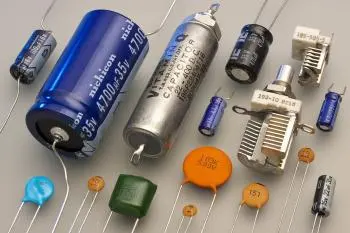
Capacitance is a fundamental concept in the field of electronics and electricity. It is an electrical property that plays an essential role in the transfer and storage of energy in electrical circuits.
In this article, we will take a closer look at what capacitance is, how it works, and why it is important in a wide range of applications.
What is capacitance?
Capacitance is the property of an electrical component known as a capacitor to store electrical charge. Capacitance is measured in units called farads (F), named after Michael Faraday, an influential 19th century scientist.
What is a capacitor?
In essence, a capacitor is a device that stores energy in the form of electrical charge inside. This charge builds up on the capacitor plates and can be released later when necessary.
Capacitors consist of two conductive plates separated by a dielectric material, which is an electrical insulator. When a potential difference (voltage) is applied between the plates of the capacitor, electrons accumulate on one of the plates, while protons accumulate on the other.
This separation of charges creates an electric field between the plates that stores electrical potential energy.
How does capacitance work?
To better understand how capacitance works, let's consider a practical example. Imagine a simple capacitor with two parallel metal plates separated by air as a dielectric. When a battery is connected to the capacitor plates, a potential difference is created between them. Electrons move from the negative plate (with an excess of electrons) to the positive plate (with a shortage of electrons).
As electrons build up on the positive plate, positive charge builds up on the negative plate. This creates an electric field between the plates that opposes the flow of electrons. As the electric field strengthens, the buildup of charge on the plates stops, and the capacitor reaches a state of equilibrium.
The amount of charge a capacitor can store at a certain voltage is determined by its capacitance. Mathematically, capacitance (C) is calculated by the formula:
C = Q / V
Where:
-
C is the capacitance in farads (F).
-
Q is the charge stored in the capacitor in coulombs (C).
-
V is the voltage applied between the plates in volts (V).
Capacitance also depends on the geometry of the capacitor (size and shape of the plates) and the dielectric material between the plates. The larger the area of the plates and the smaller the distance between them, the greater the capacitance.
Additionally, some dielectric materials have a higher relative permittivity than others, which also affects capacitance.
Importance of capacitance
Capacitance plays a crucial role in a variety of applications in electronics and electricity. Here are some key areas where capacitance is critical:
1. Filters and coupling circuits
In electronic circuits, capacitors are used in filters to separate signals of different frequencies. They are also used in coupling circuits to block direct current (DC) while allowing the passage of alternating current (AC). This is essential in applications such as audio amplifiers and radios.
2. Voltage stabilization
Capacitors are also used to stabilize voltage in electrical circuits. They can act as temporary sources of power when the main source is unstable or fluctuating, keeping the voltage at a constant level.
3. Energy storage
Capacitors are used to store energy in applications such as camera flashes, camera flashes, automotive ignition systems, and power backup devices. Although they can't store as much energy as batteries, they can release it much faster.
4. Engine starting
In industrial and automotive applications, capacitors are often used to provide an initial boost of energy to electric motors during start-up. This helps overcome initial resistance and ensures smooth and efficient starting.
5. Noise filters
Capacitors are used to eliminate unwanted electrical noise on power and signal lines. They act as filters, smoothing out voltage fluctuations and eliminating unwanted signals.